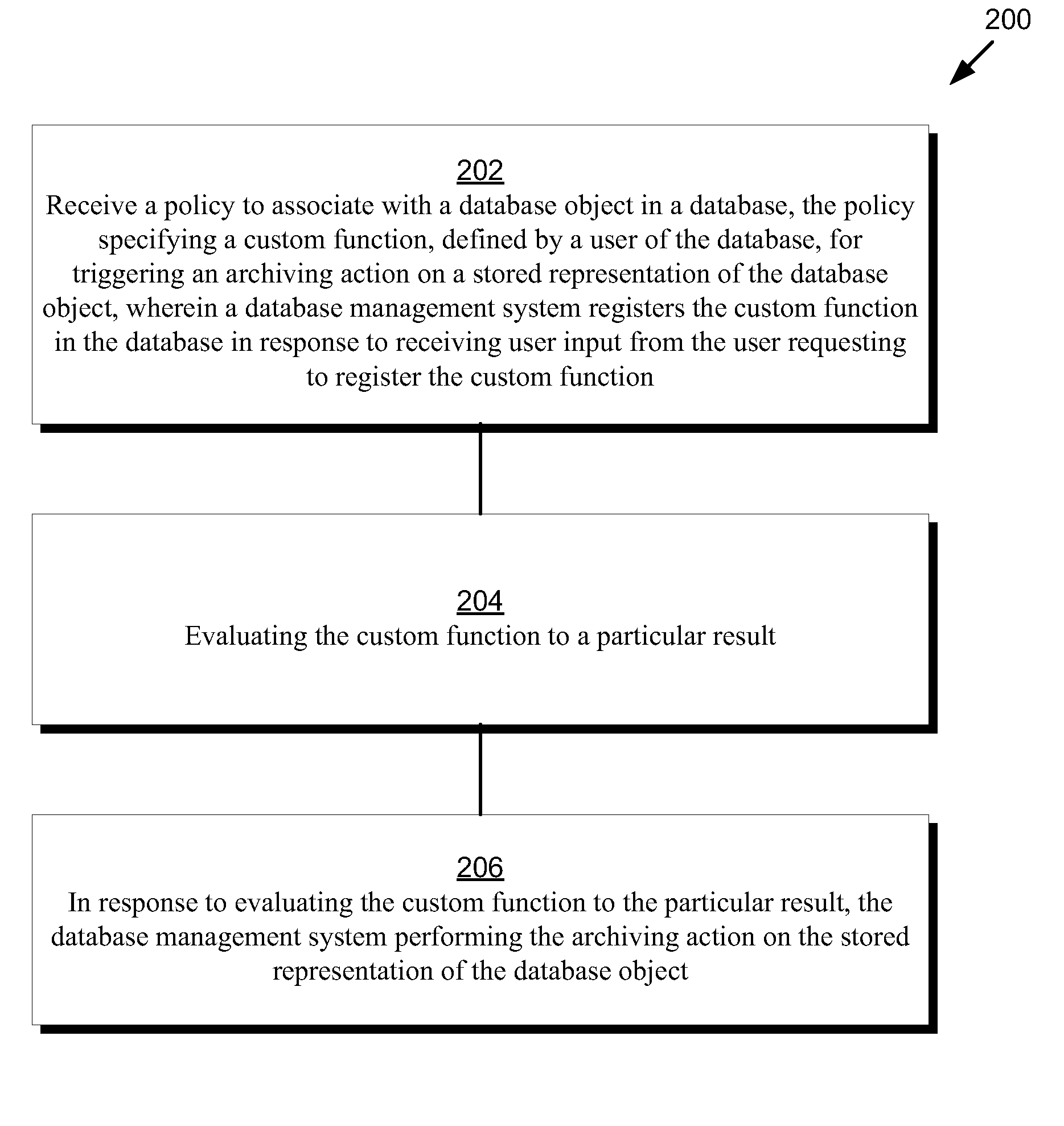Custom Policy Driven Data Placement And Information Lifecycle Management
a data placement and information lifecycle technology, applied in the field of databases, can solve the problems of reducing the usefulness of most data, affecting the quality of data, so as to achieve the bulk of the storage costs required to maintain the database, and contribute to the decline in the use of most data
- Summary
- Abstract
- Description
- Claims
- Application Information
AI Technical Summary
Benefits of technology
Problems solved by technology
Method used
Image
Examples
example ilm use case
[0073]To provide an example of recorded ILM policies using the syntax discussed above, FIG. 1C is a block diagram that depicts example custom policies for data movement and information lifecycle management in a database management system, according to an embodiment. Diagram 102 of FIG. 1C includes data dictionary 140 and custom functions 113. Data dictionary 140 includes ILM policy table 142. ILM policy table 142 includes policy 143A and policy 143B. With respect to FIG. 1C, like numbered elements may correspond to the same elements from FIG. 1A.
Table Partition Compression Policy
[0074]ILM policy table 142 contains several policies that demonstrate an example ILM use case for database 120. New, uncompressed data may initially belong to a high relevance lifecycle stage. When table partitions of the Orders table are inactive, as determined by the custom function “isOrderPartitionInactive”, then the table partitions are compressed to a higher QUERY HIGH level of compression, as reflecte...
PUM
 Login to View More
Login to View More Abstract
Description
Claims
Application Information
 Login to View More
Login to View More - R&D
- Intellectual Property
- Life Sciences
- Materials
- Tech Scout
- Unparalleled Data Quality
- Higher Quality Content
- 60% Fewer Hallucinations
Browse by: Latest US Patents, China's latest patents, Technical Efficacy Thesaurus, Application Domain, Technology Topic, Popular Technical Reports.
© 2025 PatSnap. All rights reserved.Legal|Privacy policy|Modern Slavery Act Transparency Statement|Sitemap|About US| Contact US: help@patsnap.com



